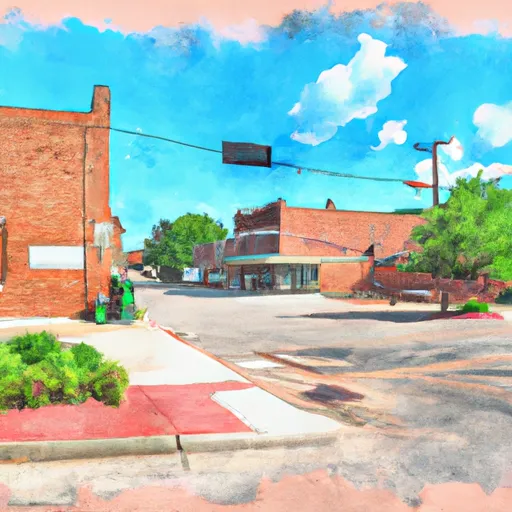-
 Snoflo Premium
Snoflo Premium
Get unlimited access to all our content
With no Ad interruptions! - Start Your Free Trial Login with existing account
Lyons
Eden Index
Climate
7.5
•
Recreation
1.7
•
Community
1.9
•
Safeguard
4.1/10

Lyons, Nebraska is a picturesque small town located in Burt County, nestled along the Elkhorn River. The climate in Lyons is characterized by four distinct seasons. Summers are warm and humid, with average temperatures ranging between 70°F and 90°F. Winters are cold, with temperatures averaging between 20°F and 40°F. Spring and fall offer pleasant weather, with temperatures ranging between 50°F and 70°F.
The town's hydrology constituents revolve around the Elkhorn River, which meanders through Lyons, providing opportunities for various water-based activities. Fishing enthusiasts can cast their lines for catfish, bass, and walleye, among other species. The Elkhorn River also offers opportunities for boating, kayaking, and canoeing, allowing residents and visitors to explore the scenic waterway.
In addition to the water-based activities, Lyons boasts several outdoor recreation opportunities. The town is surrounded by beautiful natural landscapes, making it an ideal destination for hiking, camping, and picnicking. Nearby parks and trails provide opportunities for birdwatching, wildlife spotting, and photography. Lyons is also home to a golf course, offering avid golfers a chance to enjoy their favorite sport amidst the serene countryside.
Overall, Lyons, Nebraska offers a pleasant climate, a picturesque river, and a variety of outdoor recreation opportunities, making it an appealing destination for nature lovers and outdoor enthusiasts.
What is the Eden Index?
The Snoflo Eden Index serves as a comprehensive rating system for regions, evaluating their desirability through a holistic assessment of climate health, outdoor recreation opportunities, and natural disaster risk, acknowledging the profound impact of these factors on livability and well-being.
Climate Health Indicator (CHI): 7.5
Lyons receives approximately
773mm of rain per year,
with humidity levels near 81%
and air temperatures averaging around
10°C.
Lyons has a plant hardyness factor of
5, meaning
plants and agriculture in this region thrive during a short period during spring and early summer. Most
plants will die off during the colder winter months.
By considering the ideal temperature range, reliable water supplies, clean air, and stable seasonal rain or snowpacks, the Climate Health Indicator (CHI) underscores the significance of a healthy climate as the foundation for quality living.
A healthy climate is paramount for ensuring a high quality of life and livability in a region, fostering both physical well-being and environmental harmony. This can be characterized by ideal temperatures, reliable access to water supplies, clean air, and consistent seasonal rain or snowpacks.
Weather Forecast
Streamflow Conditions
Elkhorn
Area Rivers
Elkhorn
Snowpack Depths
Elkhorn
Reservoir Storage Capacity
Elkhorn
Groundwater Levels
Recreational Opportunity Index (ROI): 1.7
The Recreational Opportunity Index (ROI) recognizes the value of outdoor recreational options, such as parks, hiking trails, camping sites, and fishing spots, while acknowledging that climate plays a pivotal role in ensuring the comfort and consistency of these experiences.
Access to outdoor recreational opportunities, encompassing activities such as parks, hiking, camping, and fishing, is crucial for overall well-being, and the climate plays a pivotal role in enabling and enhancing these experiences, ensuring that individuals can engage in nature-based activities comfortably and consistently.
Camping Areas
| Campground | Campsites | Reservations | Toilets | Showers | Elevation |
|---|---|---|---|---|---|
| Rockford Lake State Rec Area | 107 | 1,390 ft | |||
| Feits Memorial Park | 15 | 1,228 ft | |||
| Eugene T. Mahoney State Park | 150 | 1,167 ft | |||
| Burchard Lake State Wildlife Area | 10 | 1,336 ft |
Nearby Ski Areas
Catastrophe Safeguard Index (CSI):
The Catastrophe Safeguard Index (CSI) recognizes that natural disaster risk, encompassing floods, fires, hurricanes, and tornadoes, can drastically affect safety and the overall appeal of an area.
The level of natural disaster risk in a region significantly affects safety and the overall livability, with climate change amplifying these risks by potentially increasing the frequency and intensity of events like floods, fires, hurricanes, and tornadoes, thereby posing substantial challenges to community resilience and well-being.
Community Resilience Indicator (CRI): 1.9
The Community Resilience Indicator (CRI) recognizes that education, healthcare, and socioeconomics are crucial to the well-being of a region. The CRI acknowledges the profound impact of these elements on residents' overall quality of life. By evaluating educational resources, healthcare accessibility, and economic inclusivity, the index captures the essential aspects that contribute to a thriving community, fostering resident satisfaction, equity, and social cohesion.

